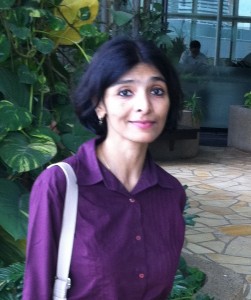 In an isolated, small hill station called Brooks Town, Gautam Dogra is murdered one quiet afternoon. The crime scene is untainted, but the weapon of murder is missing. Even so, the police dispose it off as a simple case and jail the convict.
In an isolated, small hill station called Brooks Town, Gautam Dogra is murdered one quiet afternoon. The crime scene is untainted, but the weapon of murder is missing. Even so, the police dispose it off as a simple case and jail the convict.
Everyone but, Charlotte Hyde, makes their peace with this event. For Charlotte knows that this murder did not happen in a day or in isolation. As the story unfolds, secrets unearth and hidden identities reveal themselves the reader realises that it is not just the mysterious story of a man’s death, but of love, loss, desperation, fury, vengeance all taking place throughout a lifetime amidst political tension and wars.
It Takes a murder is a complex tale of a town, its people and its events which somehow or the other lead to Gautam Dogra’s murder. The story darts between several characters, themes and times which makes it hard to follow almost half the book. The narrative doesn’t help much either.
It is only in the second half that things start coming in to perspective. And it is not exactly a light read either. Yet, It Takes a Murder is worth a read, if not for its first half, then definitely for the second. The secrets revealed in the end are oddly amusing and do justice to the story.
Q & A with Anu Kumar
Your books tend to have multiple themes combined together. The Dollmaker’s Island was touted to be a socio-political satire, a fantasy, a fairy-tale, a mystery all at once. Same goes for It Takes a Murder. It’s as much about love, as it’s about, vengeance, loss, fury, etc. Is this a deliberate decision, or do these themes emerge naturally when you write?
Both these novels and the first one before these, Letters for Paul, began in very different ways.
The Dollmakers’ Island was a very playful sort of thing, but I was just very excited about the many little histories I put in it. That complicated it all, but essentially all the different elements in that book made up a riddle that I thought would amuse the reader as she read along. I mean, it wasn’t just a reading exercise but also an attempt to involve the reader in a different way. I always tell those who ask that somehow I must have liked Italo Calvino’s If on a Winter’s Night a Traveller a bit too much and it really is a wonderful book.
It Takes a Murder did begin as a series of short stories set in a small town, spanning several decades in post independent India. Then the more I worked on it, the murder seemed important even if it was in the background and then it became important to link the stories and the people who made up these stories, to the murder. And eventually the linked stories became a complete big story.
How challenging is it, writing such multifaceted books?
It’s like this – you are telling stories about people – and they are all multifaceted, every one of us has many stories – and the more you get into a character, the more detailed a story can get. It can get out of control too, if you let your character run away too far!
You do a lot of other writing too – children’s books, articles, anthologies, poems, etc. Which is the toughest? And which one do you like the best?
This one is honestly difficult to answer. Any kind of writing demands a lot. I like writing stuff that demands research or if its fiction, getting under the skin of a character, digging up a person’s history or even creating it anew. Making something new of the ordinary, or telling in a uniquely different way, what is already there is always a challenge.
Who or what inspires your writing?
Anything from newspaper headlines to eavesdropping on conversations. Even a line from someone else’s novel or a character that another writer has totally forgotten about, or mercilessly ignored. There are stories everywhere; the trick is to know how to tell them. And you learn by reading all the great writers who can be so insightful about the most ordinary things.
Is any instance or character in It Takes a Murder that is influenced by a real-life incident or person?
Not really, there was this place I sort of knew, and some people who could only belong here, so I fitted them to situations where only they could emerge as complicated, conflicted beings, and also very believable, or so I hope.
What are you working on currently?
There’s some historical fiction and also some young adult stuff. It will all take some time. I’ll have a book out for younger readers sometime soon. It’s part of Puffin’s Girls of India series and my story is about 12-year-old Raji; she lives in the time of the Rajaraja Chola who ruled in the 10th century. Historical fiction – there isn’t much of it for the younger reader, not as much as there should be – is very exciting to me.
































